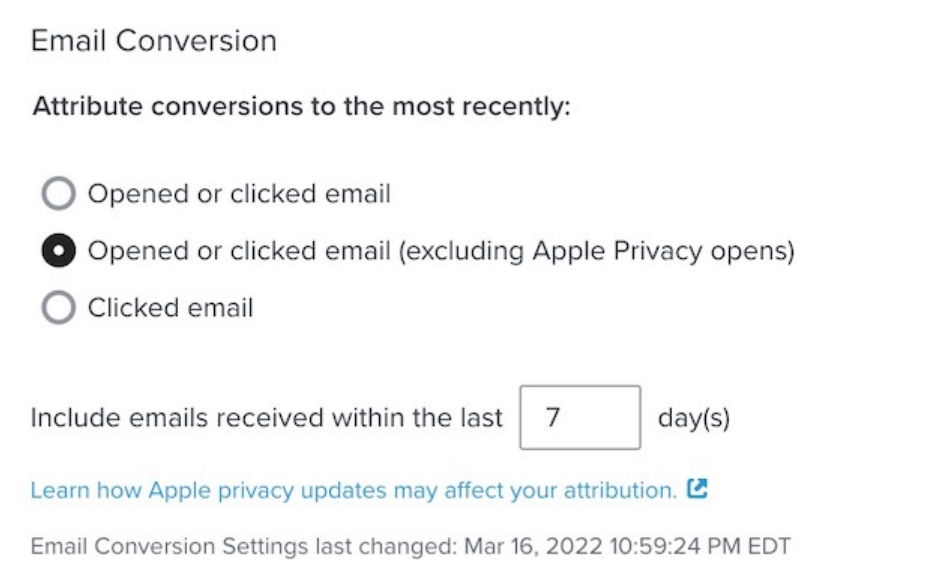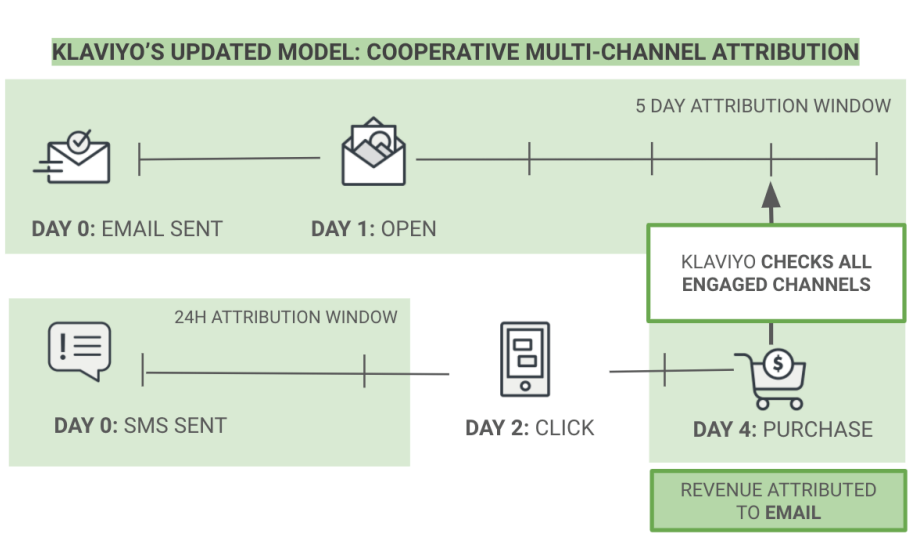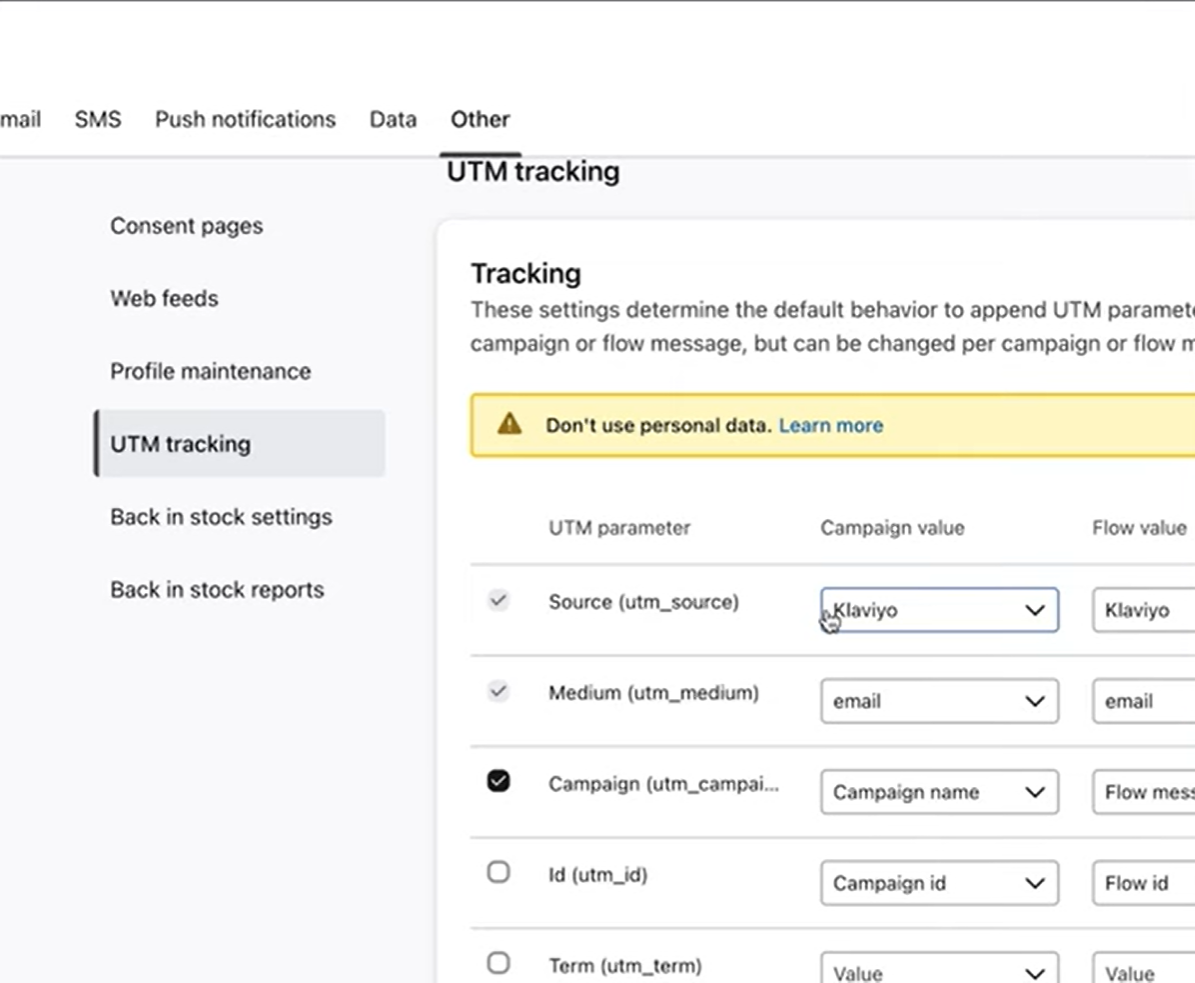In the ever-evolving world of digital marketing, understanding the performance of your campaigns is paramount.
Two prominent tools that aid in this analysis are Klaviyo and Google Analytics.
Both platforms offer attribution models to track the journey of your customers from discovery to conversion.
Both powerful tools, approach attribution in distinct ways, each with its own strengths and nuances.
However, in this article, we’ll delve into why Klaviyo’s attribution system stands out as a better choice compared to Google Analytics.
Before we jump first let us understand what is attribution.
What is Attribution?
Attribution is the process of assigning credit to various touchpoints in a customer’s journey that lead to a conversion.
It basically helps marketers identify which marketing channels and campaigns contribute most significantly to their business goals.
It’s like saying, “Hey, this ad and that email both played a part in winning over our customers.”
It helps you know which of your marketing moves are the real game-changers.
How Conversions are Tracked in Klaviyo
Klaviyo attributes conversions based on interactions with emails or SMS within a specific time window.
There are two key factors:
- Type of interaction (open or clicked)
- The window duration.
- Type of Interaction Matters–
Klaviyo attributes conversions based on two key interactions—opens and clicks, including Apple Opens.
This dual consideration ensures a comprehensive view of user engagement. - Time Windows for Attribution–
The attribution window is a critical aspect. For email interactions, Klaviyo looks back within a 5-day window.
While SMS interactions are attributed within a shorter 1-day window.


Navigating Complications in Klaviyo Attribution- A Balancing Act
Klaviyo’s attribution model encounters complications in scenarios where multiple channels are involved:
- Last Touch Attribution
When a customer interacts with two emails and subsequently makes a purchase, Klaviyo attributes the conversion to the last message clicked or opened.
This “last touch” approach provides clarity in attributing conversions. - Multi-Channel Attribution
In cases where both email and SMS were engaged before a purchase, Klaviyo assigns a single attribution to the channel with the last touch.
Notably, email benefits from a 5-day attribution window compared to SMS’s 1-day window.

Klaviyo vs. Google Analytics
Google Analytics: A Broad Overview
Google Analytics is a robust web analytics tool provided by Google. It allows you to track website traffic, user behavior, and other essential metrics. When it comes to attribution, Google Analytics employs a last-click attribution model, giving credit to the last touchpoint before a conversion.
Klaviyo: A Focus on Email Marketing
Klaviyo, on the other hand, is renowned for its specialization in email marketing. It goes beyond merely tracking website activity, placing a primary focus on customer interactions with emails. Klaviyo provides a more granular view of your email campaigns and their impact on conversions.
Comparing Both Conversion Metrics
In the clash of the titans, Klaviyo often reports higher conversions compared to Google Analytics (GA). Here’s why:
- Multi-Channel vs. Email & SMS
Google Analytics functions as a multi-channel analytical tool, whereas Klaviyo narrows its focus to Email and SMS. This focused approach may contribute to the higher attribution observed in Klaviyo. - Last Click Attribution
Google Analytics operates on the principle of last-click attribution, crediting the channel responsible for the final interaction leading to the conversion. This approach may undervalue certain touchpoints in the user journey. - Remarketing Ad Impact:
Klaviyo attribution can be influenced by aggressive paid remarketing ads, as the ad is triggered immediately upon a customer clicking on an email.
Google Analytics, however, remains unaffected by such external factors.
The Underlying Mechanisms- Cookies vs. Email & Phone Numbers
The fundamental difference lies in how these tools track user data:
- Google Analytics relies on Cookies
Google Analytics uses cookies for tracking, while Klaviyo relies on actual email and phone numbers. - Overreporting in Klaviyo
Klaviyo’s ability to attribute conversions directly to email addresses contributes to potential overreporting, as it matches order data with Shopify information. - Tracking Opens
Klaviyo tracks opens, providing a more comprehensive view of user engagement compared to Google Analytics, which focuses solely on click-level attribution.
UTM Parameters: A Critical Detail for Accuracy
Ensuring the correct setup of UTM parameters is crucial for both tools:
- Klaviyo UTM Setup
For Klaviyo, it’s essential to configure UTM parameters accurately, specifying mediums as email, to enhance the precision of attribution. - GA Channel Groupings
In Google Analytics, adjusting channel groupings to include flow/campaign in the email channel can contribute to more accurate attribution.

The Strengths of Klaviyo Attribution
Now, let’s explore why Klaviyo’s attribution model is often considered superior to Google Analytics.
1. Email-Centric Approach
Klaviyo places a special emphasis on email marketing, recognizing the pivotal role emails play in customer journeys. Unlike Google Analytics, which may not give due credit to email campaigns, Klaviyo attributes conversions more accurately by considering the influence of email touchpoints.
2. Real-Time Data and Personalization
Klaviyo provides real-time data, allowing marketers to react promptly to changing trends and customer behaviors. The platform’s advanced segmentation and personalization features enable tailored communication, ensuring that your messages resonate with specific audience segments. This real-time adaptability is crucial in today’s fast-paced digital landscape.
3. Multi-Touch Attribution Models
While Google Analytics predominantly relies on last-click attribution, Klaviyo offers various attribution models, including first-click, last-click, and multi-touch models. This flexibility empowers marketers to choose the model that best aligns with their business goals and provides a more accurate representation of the customer journey.
4. Integration with E-commerce Platforms
Klaviyo seamlessly integrates with popular e-commerce platforms, such as Shopify and Magento. This integration enables a holistic view of customer interactions, combining website data with email engagement metrics. In contrast, Google Analytics may require additional setup and configuration to achieve a similar level of integration with e-commerce platforms.
5. Customer Lifecycle Tracking
Klaviyo excels in tracking the entire customer lifecycle, from the first touchpoint to repeat purchases. By understanding how customers engage with your brand over time, you can refine your marketing strategy and foster long-term relationships. Google Analytics, while comprehensive, may not offer the same depth of insight into the nuanced stages of the customer lifecycle.
Conclusion
Choosing The Right Attribution Model for Your Business
Understanding the nuances of Klaviyo and Google Analytics attribution models is essential for making informed marketing decisions.
Klaviyo’s focus on specific channels and direct tracking using email and phone numbers can offer a unique perspective.
While Google Analytics’ multi-channel approach provides a broader view of user journeys.
Ultimately, the choice between the two depends on the specific needs and goals of your business, with a keen eye on setting up and interpreting attribution data accurately.
